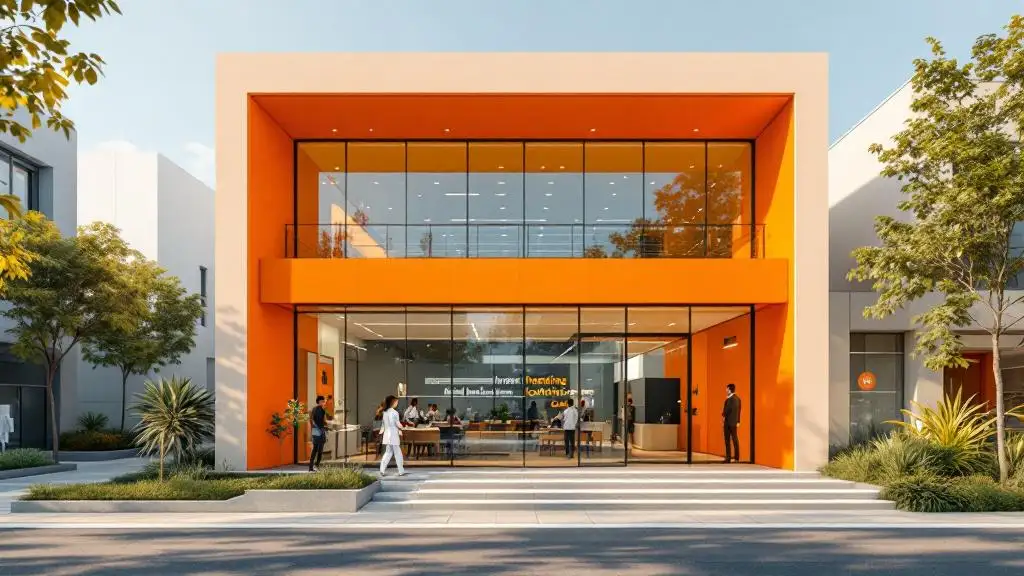Using Heatmaps to Improve Website Design for Patient Engagement
Harnessing Data-Driven Insights for Better Patient Interactions


Using Heatmaps to Improve Website Design for Patient Engagement
Transforming Healthcare Websites with Heatmaps
In the rapidly evolving digital landscape of healthcare, engaging patients effectively through website design is critical. Heatmaps have emerged as invaluable tools, providing visual insights into user behavior that inform targeted improvements. By analyzing clicks, scrolls, and attention patterns, healthcare providers can optimize page layouts, enhance usability, and foster better patient engagement. This article explores how heatmaps can be strategically employed to transform healthcare websites into more intuitive, accessible, and engaging platforms, ultimately improving patient outcomes and satisfaction.
Understanding Heatmaps and Their Types
What are heatmaps?
Heatmaps are visual tools that display website user interactions using a color spectrum, typically from blue to red. These graphical representations show where visitors click, scroll, or hover, highlighting areas of high and low interest. By translating complex data into an easy-to-understand visual format, heatmaps help website owners identify which parts of their pages attract the most attention and which are overlooked.
This visual insight allows for data-driven decisions to enhance user experience, increase engagement, and improve conversion rates. They make it simple to see at a glance the areas that need attention or adjustment.
What are the different types of heatmaps?
There are four primary types of heatmaps used in website analytics:
| Type of Heatmap | What It Shows | Purpose | Example Use Case |
|---|---|---|---|
| Click Heatmaps | Where users click most often | To identify popular elements or problematic links | Repositioning a CTA button that is rarely clicked |
| Scroll Heatmaps | How far users scroll down a page | To see if important content is being missed | Placing critical info higher on a page |
| Mouse Movement Heatmaps | Cursor trajectories and hover points | To understand which content engages users | Detecting areas where users linger or hesitate |
| Eye-Tracking Heatmaps | Where users focus their visual attention | To optimize placement of key elements like CTAs | Positioning headers or images based on visual focus |
Each type provides a different perspective on user behavior, offering a comprehensive understanding to improve website design and functionality.
How heatmaps visually represent user engagement
Heatmaps use a color-coded system, often ranging from blue (low engagement) to red (high engagement). For example, on a click heatmap, areas with many clicks appear in red, indicating strong interest or possibly confusing clickable regions. Conversely, mainly blue zones show little interaction.
Similarly, scroll heatmaps display the percentage of users who reach each section of a page, with warmer colors indicating higher engagement levels. Eye-tracking maps overlay a visual fixation pattern, revealing the natural focus points of users.
By interpreting these colors and patterns, designers and marketers can pinpoint which elements draw attention and which are ignored, guiding targeted optimizations to enhance overall user experience.
The Role of Heatmaps in Healthcare Website Optimization
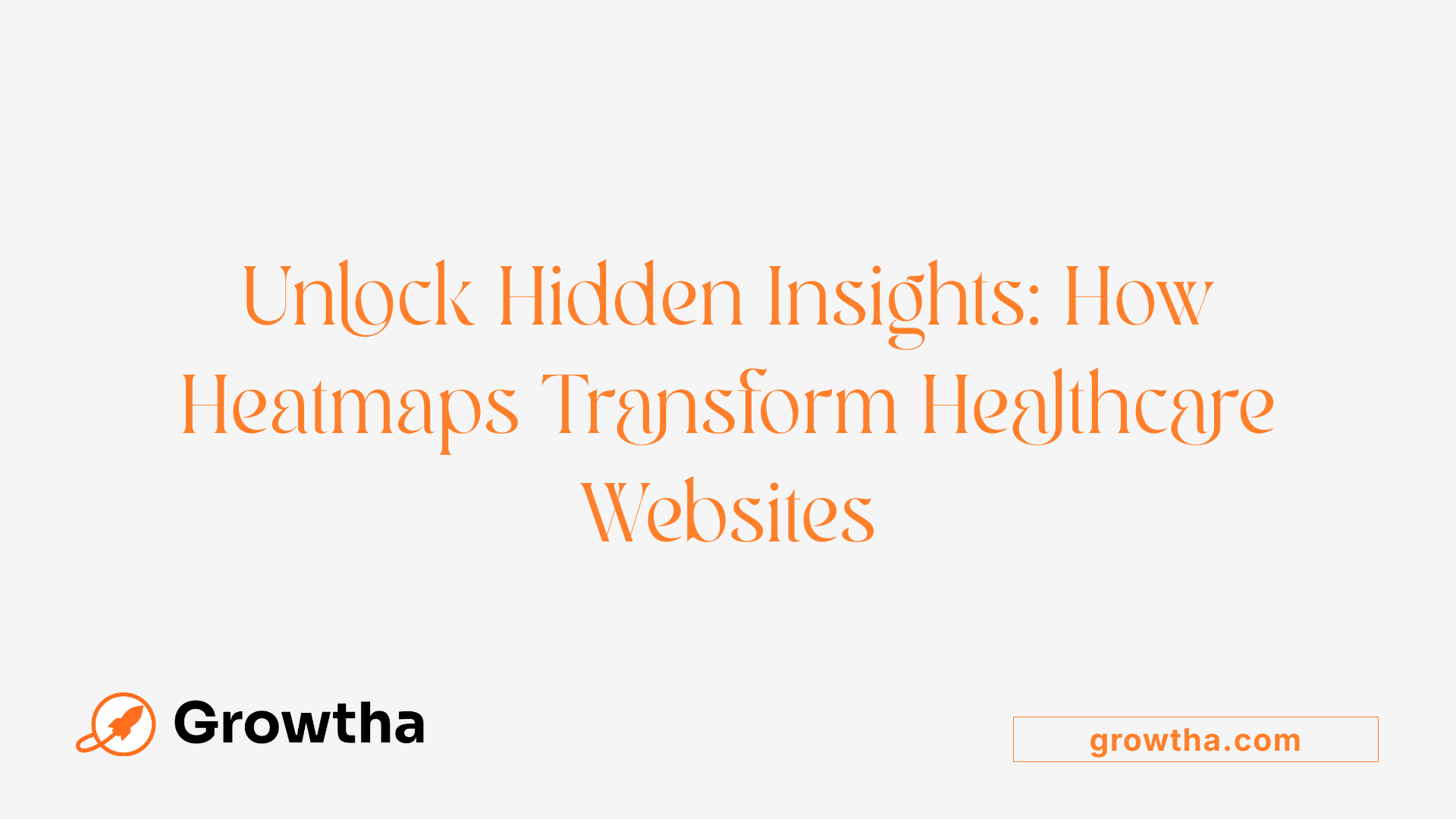
What is the role of heatmaps in digital marketing analysis?
Heatmaps are vital tools in understanding how users interact with healthcare websites. They visually display where visitors click, scroll, and hover using color codes—warmer colors like red highlight areas of high activity, while cooler colors such as blue indicate low engagement. By mapping these behaviors, healthcare providers can identify which sections or features attract the most attention and which are overlooked.
One of their primary functions is to pinpoint user engagement zones on a webpage, helping designers and marketers understand where visitors focus their attention. For healthcare sites, this could mean recognizing the most accessed areas like appointment booking buttons or patient information sections.
Additionally, heatmaps highlight unclicked or ignored elements. These may include irrelevant links, confusing navigation cues, or poorly positioned content. Recognizing these issues allows for targeted adjustments to improve user flow and eliminate barriers to key actions.
Optimizing placement of content and calls-to-action (CTAs) is another critical aspect supported by heatmap insights. For instance, if a CTA such as scheduling a consultation receives little interaction, repositioning it to a more prominent or engaging spot can dramatically increase conversions. Overall, heatmaps empower healthcare websites to enhance usability and ensure vital information and functionalities are easily accessible.
By integrating heatmaps into their optimization strategies, healthcare providers can create more intuitive, accessible, and engaging websites. This not only improves patient experience but also supports health organizations in achieving their outreach and engagement goals more effectively.
Implementing Heatmaps for Patient Engagement Success
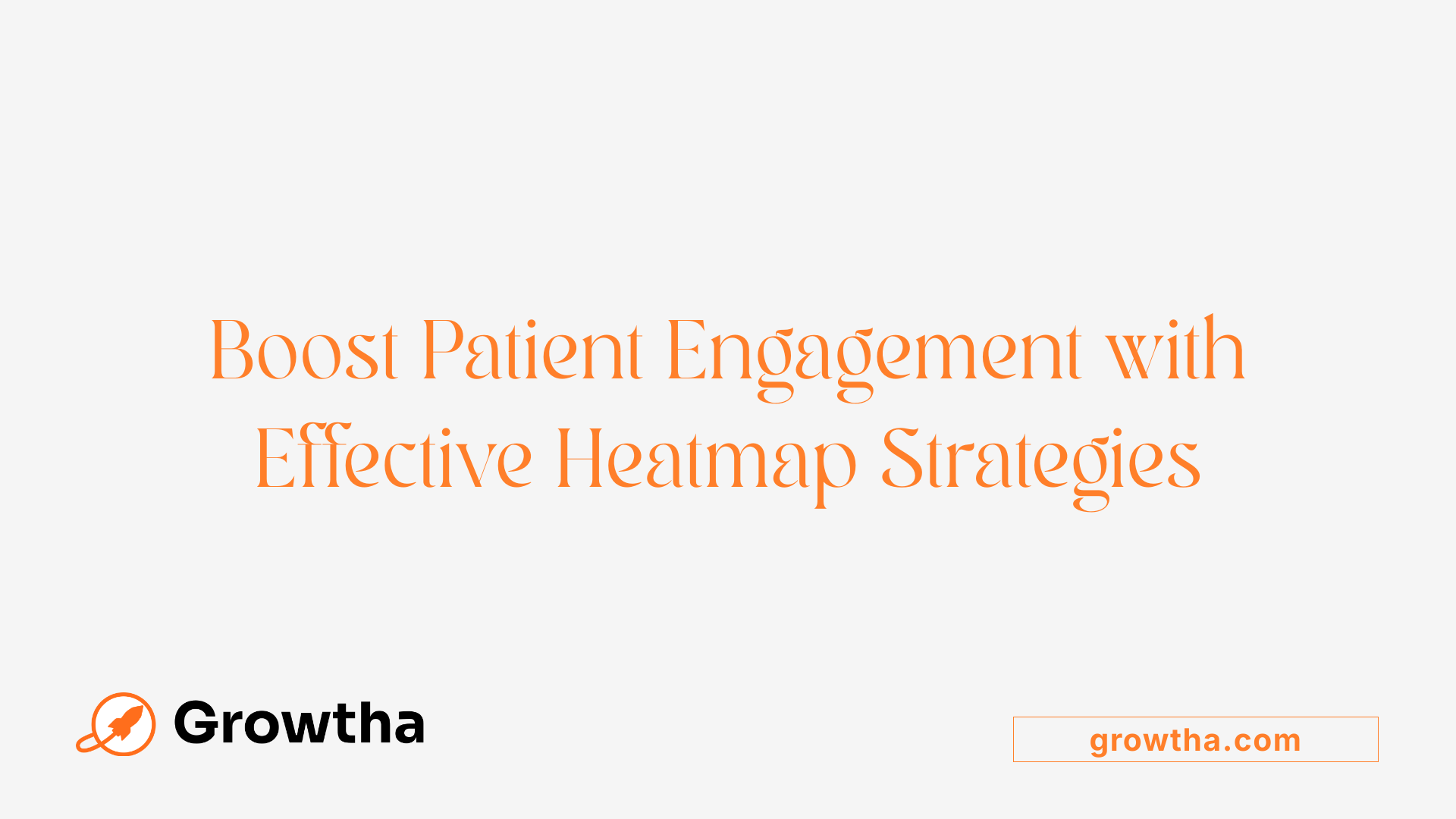
Techniques and tools for implementing heatmaps in healthcare website design?
To effectively incorporate heatmaps into healthcare websites, it is essential to choose the right tools. Popular options include Lucky Orange, Hotjar, and Heap, each offering capabilities such as click tracking, scroll mapping, mouse movement, and session recordings. These tools require embedding a tracking code into the website's codebase, which gathers data on user interactions in real time.
Implementing heatmaps also involves carefully managing data privacy and security. Given the sensitive nature of healthcare data, compliance with standards like HIPAA is imperative. This can be achieved by anonymizing data, encrypting information, and securing user consent before data collection.
Integration with analytics and A/B testing platforms allows healthcare providers to analyze user behavior comprehensively. Combining heatmap data with traditional analytics and testing variations helps optimize the site layout, content placement, and user flow. Through continuous iteration, healthcare websites can improve patient engagement, facilitate easier navigation, and boost overall satisfaction.
Best Practices for Analyzing Heatmap Data in Healthcare Contexts
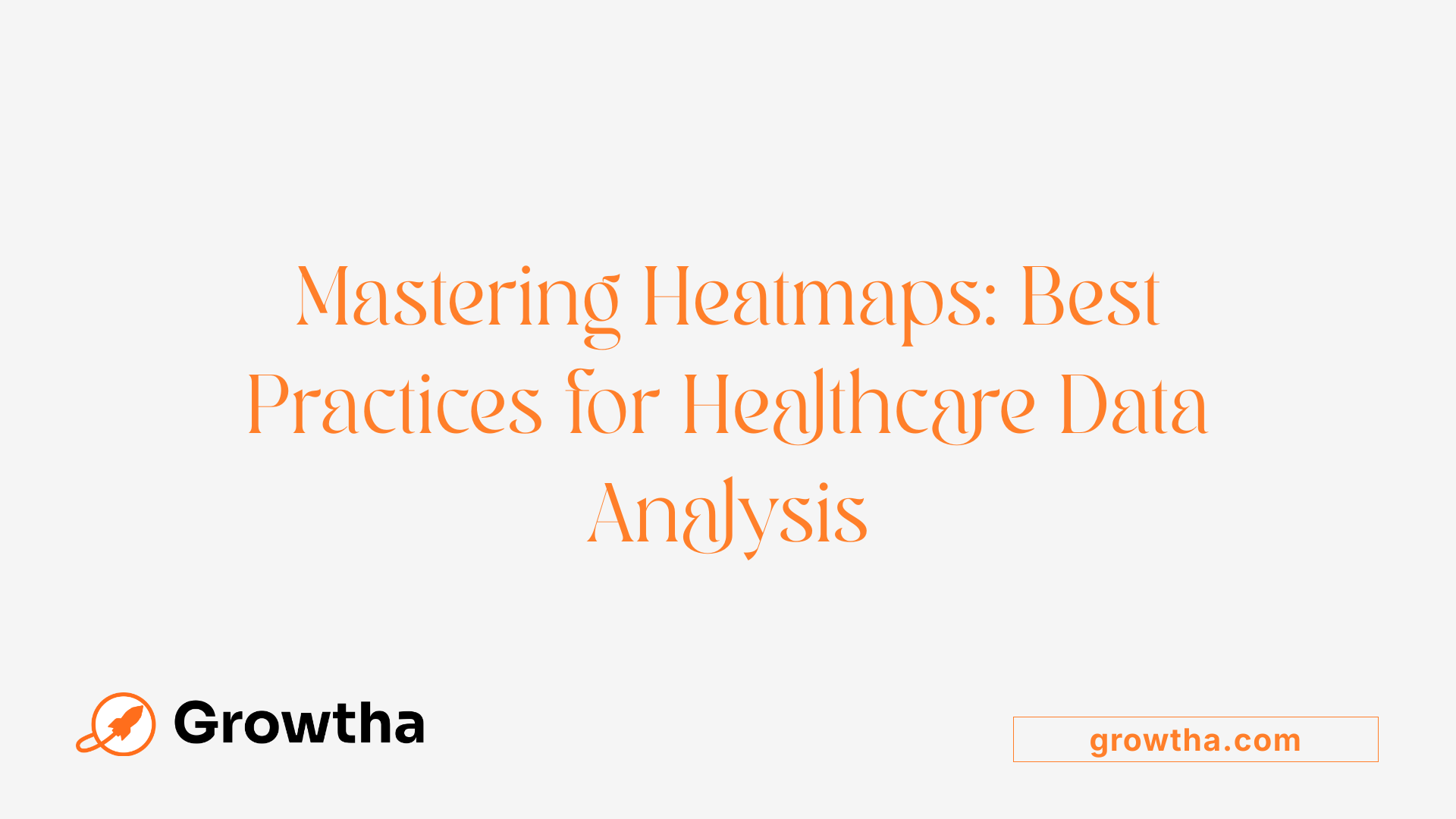 When it comes to optimizing healthcare websites, analyzing heatmap data is an essential step in understanding user behavior and improving user experience. To make the most of this data, start by setting clear objectives. Define what you want to learn—whether it’s improving appointment bookings, enhancing content clarity, or increasing user engagement with patient portals. Clear goals help you focus your analysis on relevant areas, such as which sections users focus on most or where they drop off.
When it comes to optimizing healthcare websites, analyzing heatmap data is an essential step in understanding user behavior and improving user experience. To make the most of this data, start by setting clear objectives. Define what you want to learn—whether it’s improving appointment bookings, enhancing content clarity, or increasing user engagement with patient portals. Clear goals help you focus your analysis on relevant areas, such as which sections users focus on most or where they drop off.
Next, segment your user data by demographics or device type. Healthcare audiences can vary widely by age, location, or device usage. For example, mobile users may scroll less but focus more on quick access to contact information, while desktop users might spend more time reading detailed content. Segmenting this data allows you to tailor your website design to meet specific user needs effectively.
In addition to heatmaps, combine this analysis with other UX tools such as session recordings, user surveys, and A/B testing. Heatmaps reveal active areas and behaviors visually, while session recordings show the actual user journey, providing context to hot spots and cold spots. Surveys help capture user sentiments, and A/B testing can validate changes made based on heatmap insights.
Heatmaps help identify unclicked elements and confusing navigation, which can be critical in healthcare where clear pathways are vital. For example, if appointment scheduling buttons are rarely clicked, placement or labeling might need adjustment. Eye-tracking heatmaps can reveal whether users focus on critical information like symptoms, services, or contact details.
Focusing on actionable insights from heatmaps enables healthcare providers to optimize layout, content organization, and element placement. The goal is to reduce friction, guide users seamlessly through their journey, and ultimately increase conversions—such as appointment bookings or patient inquiries.
Future advancements like AI-powered heatmaps are particularly promising in healthcare. They provide real-time, predictive insights across devices and even include voice or gesture-based interactions, broadening the scope of user analysis. Implementing a structured, analytical approach with these tools ensures continuous improvement, leading to higher patient satisfaction, better engagement, and improved health outcomes.
Leveraging Heatmaps for Continuous Website Improvement
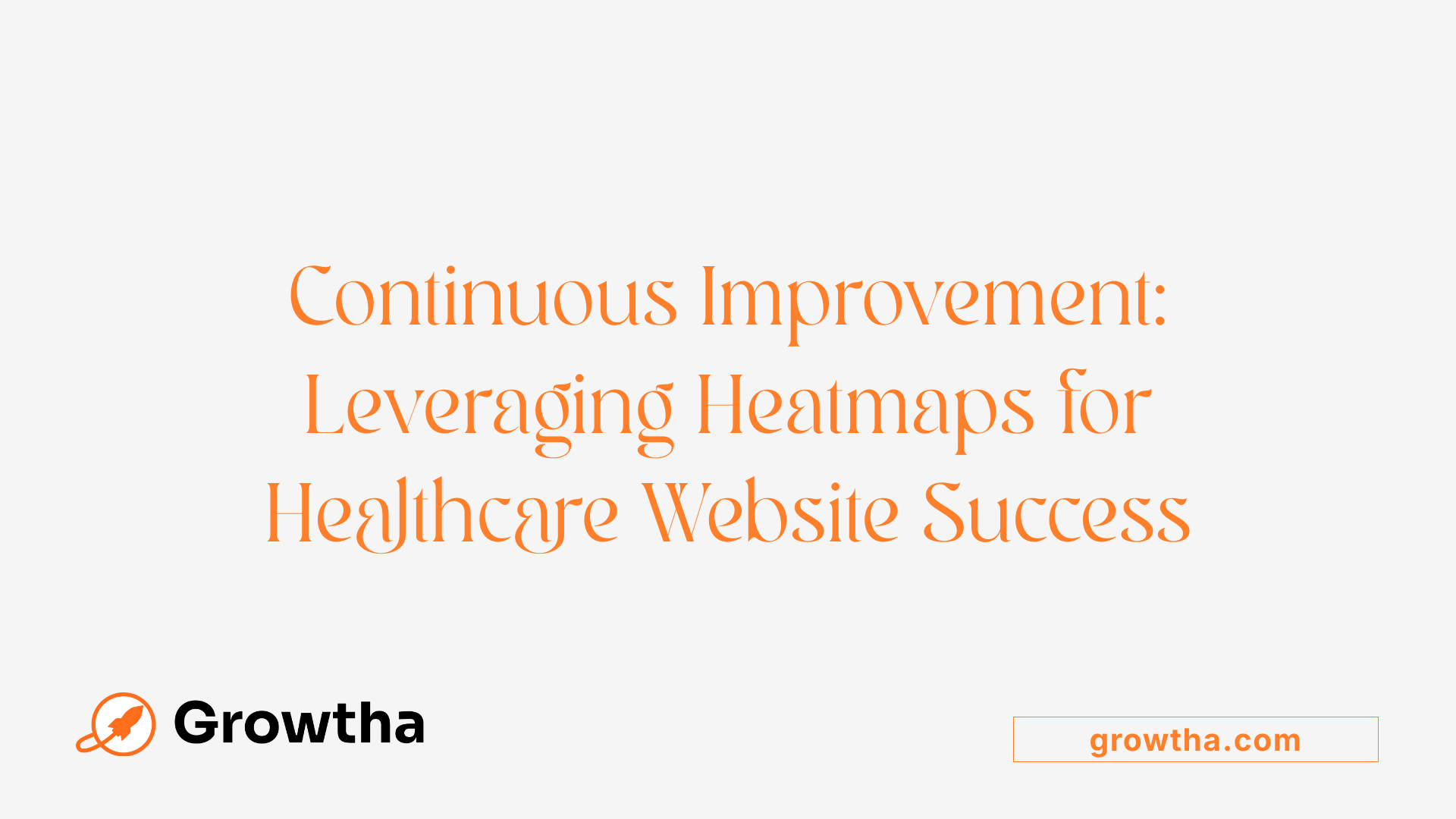
What is the purpose of using heatmaps in website optimization and patient engagement?
Heatmaps serve as invaluable tools in the realm of healthcare websites by visually illustrating user interactions. Using color-coded overlays—where warmer colors like red denote high activity and cooler ones like blue indicate less engagement—they reveal precisely where visitors focus their attention, click, scroll, or hover.
For healthcare providers and pharmaceutical companies, this detailed data helps identify which parts of a webpage attract users and which areas may cause confusion or be ignored. Understanding these patterns allows for targeted improvements, such as repositioning important content, enhancing call-to-action buttons, or streamlining navigation.
Moreover, heatmaps, when combined with session replays and funnel analysis, offer comprehensive insights into patient and user navigation paths. They help uncover friction points, frustration zones, or content that isn’t reaching the audience effectively. This information supports continuous, data-driven website optimization.
In the healthcare context, optimizing website layout and content enhances accessibility, boosts user satisfaction, and encourages engagement—crucial factors for patient retention and communication. Ultimately, leveraging heatmaps ensures healthcare websites are user-friendly, accessible, and aligned with patient needs, fostering better health outcomes and improved patient-provider interactions.
How do heatmaps aid in iterative testing and refinement?
Heatmaps facilitate an ongoing cycle of testing and refining website elements. By analyzing heatmap data after implementing design changes, teams can assess whether alterations are effectively directing user attention or improving engagement.
For example, if a new landing page layout still shows low click activity on important CTAs, further adjustments can be made and tested in successive iterations. This method allows for rapid, informed decisions based on real user behavior rather than assumptions.
The iterative approach involves setting clear goals, applying targeted modifications, and monitoring the impact with updated heatmaps. Over time, this process helps optimize layout, content placement, and usability, leading to a more intuitive experience.
Additionally, integrating heatmaps with A/B testing enables healthcare organizations to compare variations directly. The data garnered guides selecting the most effective design choices, reducing guesswork, and ensuring continuous improvement.
How are KPIs like engagement and conversions tracked through heatmaps?
Heatmaps play a crucial role in tracking key performance indicators such as user engagement, time on page, click-through rates, and conversion metrics. By visually pinpointing the most interacted areas, organizations can measure whether design changes lead to higher user involvement.
For instance, increasing clicks on a prominent call-to-action button or expanding scroll reach to vital content signals improvement. Changes that result in more consistent attention and interaction across critical elements indicate successful optimization.
Healthcare websites can also link heatmap insights with analytics dashboards to evaluate how behavioral data correlates with conversions—such as appointment bookings, form submissions, or content downloads. This integration allows organizations to attribute improvements directly to layout adjustments based on heatmap feedback.
By continuously monitoring these KPIs, healthcare providers can ensure their digital platforms effectively engage users, foster trust, and support health-related goals.
| Type of Heatmap | What It Shows | How It Helps | Example Use in Healthcare |
|---|---|---|---|
| Scroll Map | How far users scroll | Ensures important content is seen | Positioning key health info or FAQs |
| Click Map | Where users click | Identifies popular and ignored elements | Placing appointment links or CTA buttons |
| Mouse/Move Map | Cursor movements, attention points | Understands engagement focus | Optimizing placement of critical instructions |
| Eye-Tracking Heatmap | Visual attention focus | Fine-tuning visibility of key features | Highlighting critical alerts or health tips |
By applying these insights iteratively, healthcare websites can refine their design, improve user satisfaction, and increase engagement, ultimately leading to better patient outcomes and higher conversion rates.
Case Studies: Success Stories with Heatmap Optimization

How do healthcare and media organizations use heatmaps to improve their websites?
Heatmaps serve as powerful tools for understanding user interactions on websites, including clicks, scrolls, and eye movement patterns. In healthcare and digital media sectors, these insights help optimize the user experience, increase engagement, and boost conversions.
What results have organizations achieved through heatmap-driven strategies?
Many organizations report significant improvements after implementing heatmap insights. For instance, healthcare websites using heatmaps to optimize layout and call-to-action placement have seen faster load times, improved accessibility, and higher patient engagement. Media outlets, such as The New York Times, utilized heatmaps to analyze content interaction, which helped them restructure layouts and advertisements. This led to increased reader engagement and higher ad revenue.
What lessons can be learned from these success stories?
A common takeaway from these case studies is the importance of data-driven decision-making. Regular analysis of heatmaps allows organizations to identify high-engagement zones and frustrating elements, enabling targeted improvements. Integrating heatmaps with other tools such as A/B testing and user feedback further refines website performance.
| Organization | Focus Area | Achievements | Best Practices |
|---|---|---|---|
| The New York Times | Content layout & ad placement | More reader engagement, increased revenue | Analyze interaction patterns, optimize layout iteratively |
| Healthcare sites | Accessibility & patient engagement | Faster load times, improved usability | Use heatmaps to identify friction points, ensure HIPAA compliance |
| Digital media firms | Content & UI optimization | Higher engagement, better conversion rates | Regularly monitor heatmaps, combine with other analytics tools |
Searching for more case studies
To explore more success stories, search using phrases like 'Case studies of heatmap use in digital media and healthcare websites.' These examples highlight how organizations leverage heatmaps not just for aesthetic improvements but for meaningful, measurable results.
Embracing heatmap insights helps organizations craft more user-friendly websites that meet their users’ needs, ultimately leading to increased engagement and business growth.
Future Outlook: The Next Generation of Heatmaps and AI Integration
Advancements in AI-powered heatmaps are set to revolutionize how businesses understand user behavior online. These next-generation tools can analyze interactions in real-time, offering insights that were previously delayed or inaccessible with traditional methods. AI enhances heatmaps by enabling dynamic content personalization, where websites adapt instantly to individual user patterns, significantly boosting engagement and conversions.
One of the most promising developments is the use of predictive attention modeling. Machine learning models such as Markov chains and recurrent neural networks can forecast where users are likely to focus their attention in the near future. This predictive capability allows website designers to proactively optimize layout and content placement, reducing guesswork and speeding up the iteration process.
Multi-device journey mapping benefits greatly from AI integration. By capturing user interactions across desktops, tablets, and smartphones, AI-powered heatmaps create seamless experiences, helping companies identify friction points across platforms. This cross-device insight facilitates more cohesive design strategies and improves overall user satisfaction.
Further advancements include voice and gesture recognition integrated into heatmap analysis, broadening the scope to include non-traditional user interactions. This evolution enhances accessibility and provides a more comprehensive picture of how diverse user groups engage with digital content.
As these technologies continue to develop, heatmaps will become increasingly sophisticated and integral to web optimization strategies. They will enable businesses to make faster, more accurate decisions grounded in rich behavioral data. The result is a future where websites are more personalized, intuitive, and emotionally engaging—driving higher retention, loyalty, and conversion rates.
In summary, the future of heatmaps is intertwined with AI evolution, promising smarter, more predictive, and user-centric web experiences that adapt in real-time and across all devices, transforming digital engagement for the better.
Conclusion and Final Recommendations
Summarizing the Advantages of Heatmaps for Healthcare Websites
Heatmaps are powerful tools that visualize user interactions on healthcare websites, providing insights into where visitors focus their attention. They reveal high-engagement zones, areas of confusion, and elements that attract or repel users. For healthcare providers, leveraging heatmaps can significantly enhance website usability, accessibility, and patient engagement. These visual data representations help identify content placement issues, optimize call-to-action buttons, and improve overall site layout, leading to increased patient satisfaction and higher appointment bookings.
Important Takeaways for Healthcare Providers
Implementing heatmaps allows healthcare organizations to make informed, data-driven decisions. By analyzing click, scroll, and eye-tracking data, providers can understand patient behavior and preferences better. Using AI-powered heatmaps adds the advantage of real-time insights, predictive analysis, and personalized content adaptation, further refining user experience. Additionally, heatmaps assist in compliance and accessibility efforts by highlighting problematic areas that might hinder users with disabilities. Continuous use of heatmaps supports ongoing website improvements, ultimately fostering trust and loyalty among patients.
Encouragement to Integrate Heatmaps
Healthcare organizations should consider adopting heatmap technology as part of their digital strategy to boost website performance. Starting with core pages—such as appointment booking and informational content—can yield quick wins. Regular analysis and iteration based on heatmap insights will lead to better content placement, improved usability, and higher conversion rates. As AI-driven tools become more sophisticated, integrating heatmaps will become essential for staying competitive in the digital healthcare space.
By embracing heatmap analytics, healthcare providers can create more engaging, accessible, and effective online platforms. This not only improves patient communication but also supports broader organizational goals of efficiency and quality care. Taking the step to incorporate heatmaps now prepares your website to meet future demands for personalized, user-centric design—ultimately driving better health outcomes and patient satisfaction.
Transforming Patient Engagement Through Data-Driven Design
By leveraging heatmaps, healthcare organizations can craft user-centered websites that cater more effectively to patient needs. These tools serve as a compass for guiding layout, content, and feature placement, ensuring that every element maximizes engagement and accessibility. As AI continues to advance, the potential for real-time personalization and predictive insights will only grow, making heatmaps an essential component of ongoing digital health innovation. Adopting these methodologies empowers healthcare providers to deliver more intuitive and responsive experiences, fostering stronger patient relationships and improving overall healthcare delivery.
References
- Heatmaps to Enhance Website Engagement - Concrete CMS
- How to use website heatmaps to improve user experience design.
- Future of Website Design: Trends and Innovations in AI-Powered ...
- 5 Ways to Boost Healthcare Site Engagement | Reason One Blog
- What is a Heatmap? How They Work, What They're Used For ...
- Landing Page Heatmap Analysis For High-Growth Websites
- Using Heatmap Tracking Data for Site Engagement Analysis
- How to Use Heatmaps to Improve Your Website's UX - Contentsquare






